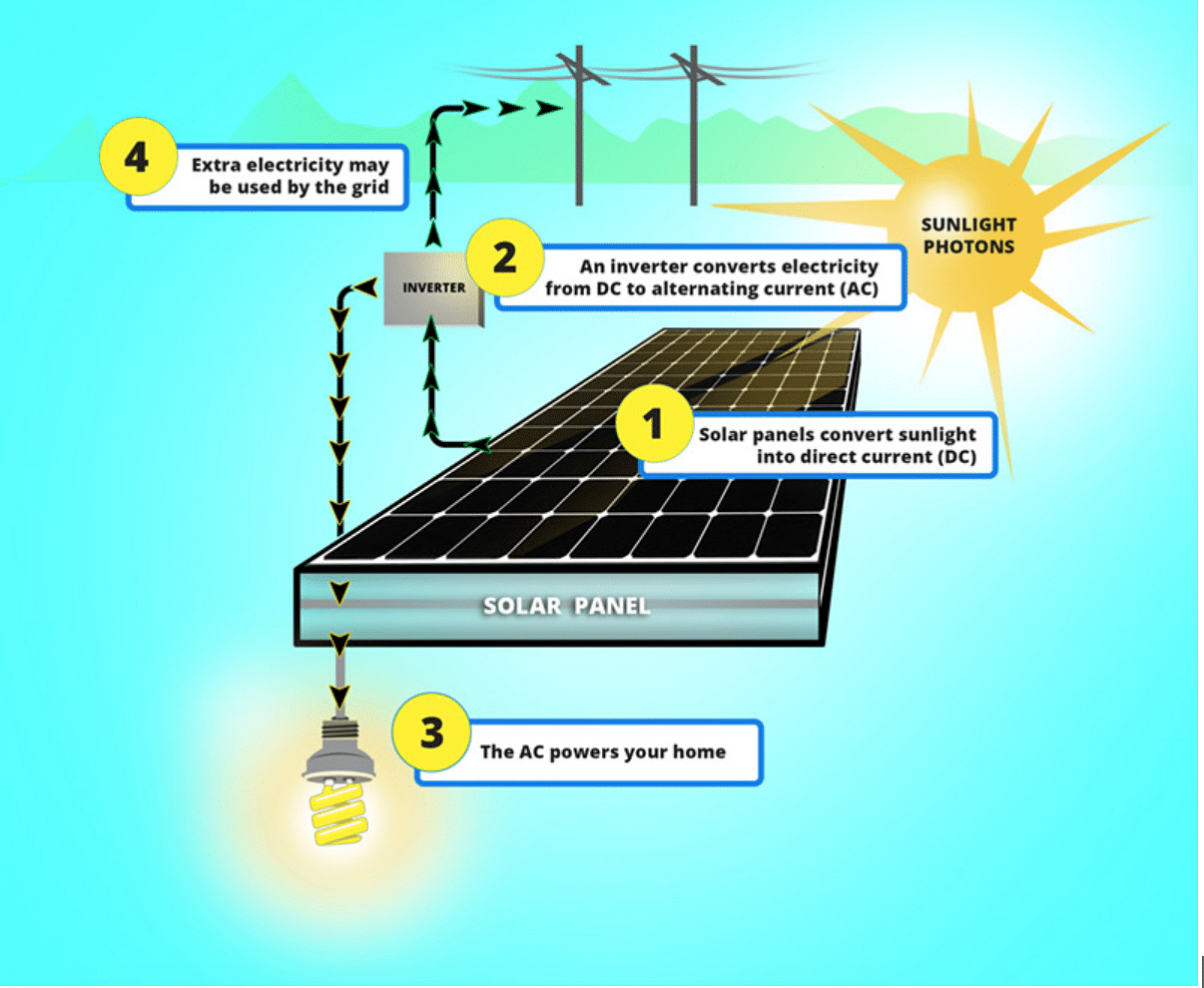
May 3rd, 2023
How Solar Works
Solar energy works by capturing the sun’s energy and turning it into electricity for your business.
Harnessing the power of the sun, solar energy transforms sunlight into electrical power for businesses.
Acting as a natural nuclear furnace, our sun emits energy-packed particles known as photons. These photons embark on a 93 million-mile journey from the Sun to Earth, taking roughly 8.5 minutes. Every hour, our planet is bombarded with enough photons to generate solar energy that could, in theory, cater to the world's renewable energy needs for a year.
As per the data from Energy.gov, the accessibility, affordability, and ubiquity of solar power in the United States have skyrocketed. From a mere 0.34 GW in 2008, U.S. solar power capacity has skyrocketed to an estimated 97.2 gigawatts (GW) presently, powering roughly 18 million average American homes. Today, solar energy, in the form of solar photovoltaics (PV) and concentrating solar-thermal power (CSP), constitutes over 3% of U.S. electricity.
Since 2014, there's been a nearly 70% reduction in the average cost of solar PV panels. As solar electricity has become economically competitive with traditional energy sources, solar energy markets are rapidly evolving across the country.
The potential and abundance of solar power throughout the United States are truly astounding: PV panels spanning just 22,000 square miles (approximately the size of Lake Michigan) could generate sufficient electricity to power the entire country.
A 2021 report by the International Energy Agency anticipates that solar PV electricity production will surge by 145 TeraWatts hours (TWH) – positioning solar as the second most utilized renewable energy source, trailing wind. Large-scale developers in China and the United States rushed to complete record-breaking large capacity installations in the fourth quarter of 2020 due to policy deadlines. The future of solar power promises widespread benefits of renewable energy.
93Energy is a solar energy company in Chicago, serving the state of Illinois and the entire Midwest.
GET YOUR NO-OBLIGATION SOLAR ESTIMATE
Understanding Solar Panels
Photons striking a solar cell dislodge electrons from their atoms. Creating an electrical circuit involves connecting conductors to the cell's positive and negative sides. When electrons traverse this circuit, electricity is generated. Multiple cells form a solar panel, and multiple panels (or modules) can be connected to create a solar array. The more panels you install, the more energy you can anticipate producing.
What are Solar Panels Composed of?
Photovoltaic (PV) solar panels consist of numerous solar cells made of silicon, akin to semiconductors. These cells feature a positive and a negative layer, which together establish an electric field, much like a battery.
Role of a Solar Inverter
A solar inverter converts the DC electricity generated by the solar array into AC electricity. Serving as the system's "brain," inverters not only convert DC to AC power but also provide ground fault protection and vital system statistics, such as voltage, current on AC and DC circuits, energy production, and maximum power point tracking.
Traditionally, central inverters have been prevalent in the solar industry. However, the advent of micro-inverters marked a significant technological shift in the PV industry. Micro-inverters optimize each individual solar panel rather than the entire solar system, as central inverters do. This allows every solar panel to operate at its peak potential. With central inverters, issues with one panel (like shading or dirt) can impact the entire solar array's performance. Micro-inverters, such as those used in our business solar systems, render this problem moot. If one panel encounters an issue, the rest of the array still functions efficiently.
Solar Panels and Electricity Generation
PV solar panels produce direct current (DC) electricity, where electrons circulate in one direction around a circuit. This concept can be demonstrated with a battery powering a light bulb; electrons move from the negative side of the battery, through the lamp, and return to the positive side of the battery.
On the other hand, with AC (alternating current) electricity, electrons are alternately pushed and pulled, periodically reversing direction, similar to a car's engine piston. Generators produce AC electricity when a coil of wire is spun next to a magnet. Various energy sources can "drive" this generator, including gas, diesel, hydroelectricity, nuclear, coal, wind, or solar.
The U.S. electrical power grid predominantly uses AC electricity due to its cost-effectiveness for long-distance transmission. However, solar panels generate DC electricity. The conversion of DC electricity into the AC grid is made possible through the use of an inverter.
How Does a Solar Energy System Operate?
Here's a brief outline of how a typical solar energy setup works: First, sunlight strikes a solar panel installed on the roof. The panels convert this energy into DC current, which is then directed to an inverter. The inverter transforms the DC electricity into AC electricity, which can then be utilized to power your business. This process is not only remarkably simple and clean but is also becoming increasingly efficient and affordable.
But what if you aren't business during the day to utilize the electricity your solar panels are generating? And what happens at night when your solar system isn't generating power in real-time? The answer lies in a system known as "net metering."
In a typical grid-tied PV system, excess energy is often produced during peak daylight hours beyond the customer's needs. This excess energy is then fed back into the grid for use elsewhere. The customer earns credit for the excess energy produced and can use this credit to draw from the conventional grid at night or on cloudy days. A net meter records the energy sent in comparison to the energy received from the grid.
If you’re ready to take advantage of the most powerful source of energy in our solar system, then 93Energy is here to help you make it happen. Reach out to us today to learn more about how easily you can go solar and take control of the power in your life!